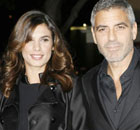Asia-Pacific
Gates: 'Severe consequences' for Afghan failure
(Agencies)
Updated: 2009-12-03 02:29
Obama pledged Tuesday night to an audience of Army cadets at the US Military Academy that the shift from surge to exit strategy would depend on the military situation in Afghanistan.
"We will execute this transition responsibly, taking into account conditions on the ground," Obama said, declaring that the nation's security was at stake and that the additional troops were needed to "bring this war to a successful conclusion."
The planned infusion of 30,000 US troops would raise the total American military presence in Afghanistan to about 100,000.
Many Democrats said they weren't convinced that sending more troops would hasten an end to the war. They also question whether the money used for troop deployments will drain resources from other domestic priorities, like health care and job creation.
Sen. Russ Feingold, D-Wis., called the plan "an expensive gamble to undertake armed nation-building on behalf of a corrupt government of questionable legitimacy."
After meeting Wednesday with Karzai, US Gen. Stanley McChrystal called Karzai's reaction to the new US strategy "really positive. The president was very upbeat, very resolute this morning."
NATO Secretary-General Anders Fogh Rasmussen said he expected the allies to bolster the American buildup with more than 5,000 additional troops. Gates said the administration would seek 5,000 to 7,000 allied forces and "expect them to share more of the burden in training, equipping, and funding" the Afghan forces.
He said the allies would remain focused on the less volatile north and west of Afghanistan to "prevent the insurgency from establishing new footholds," while Americans focus on the south and east.










